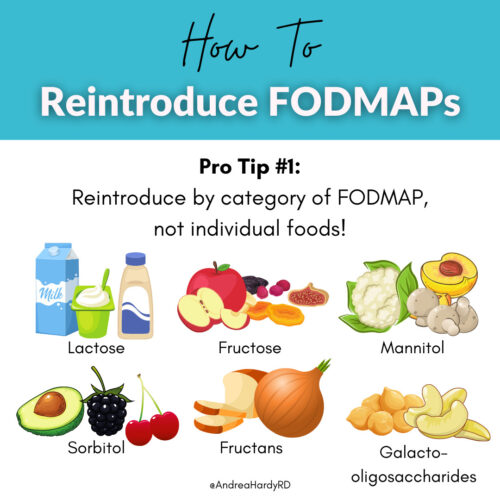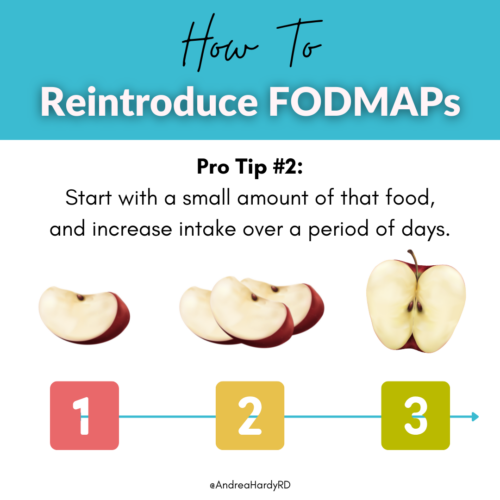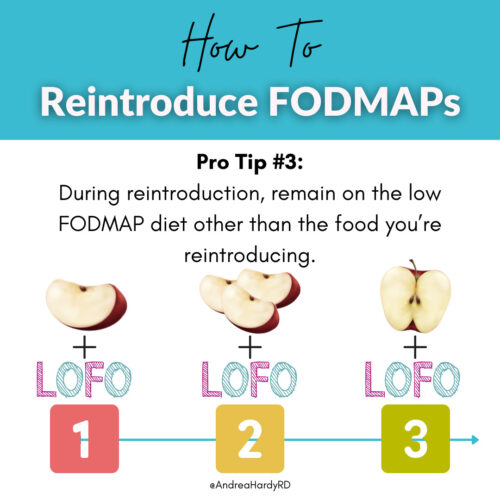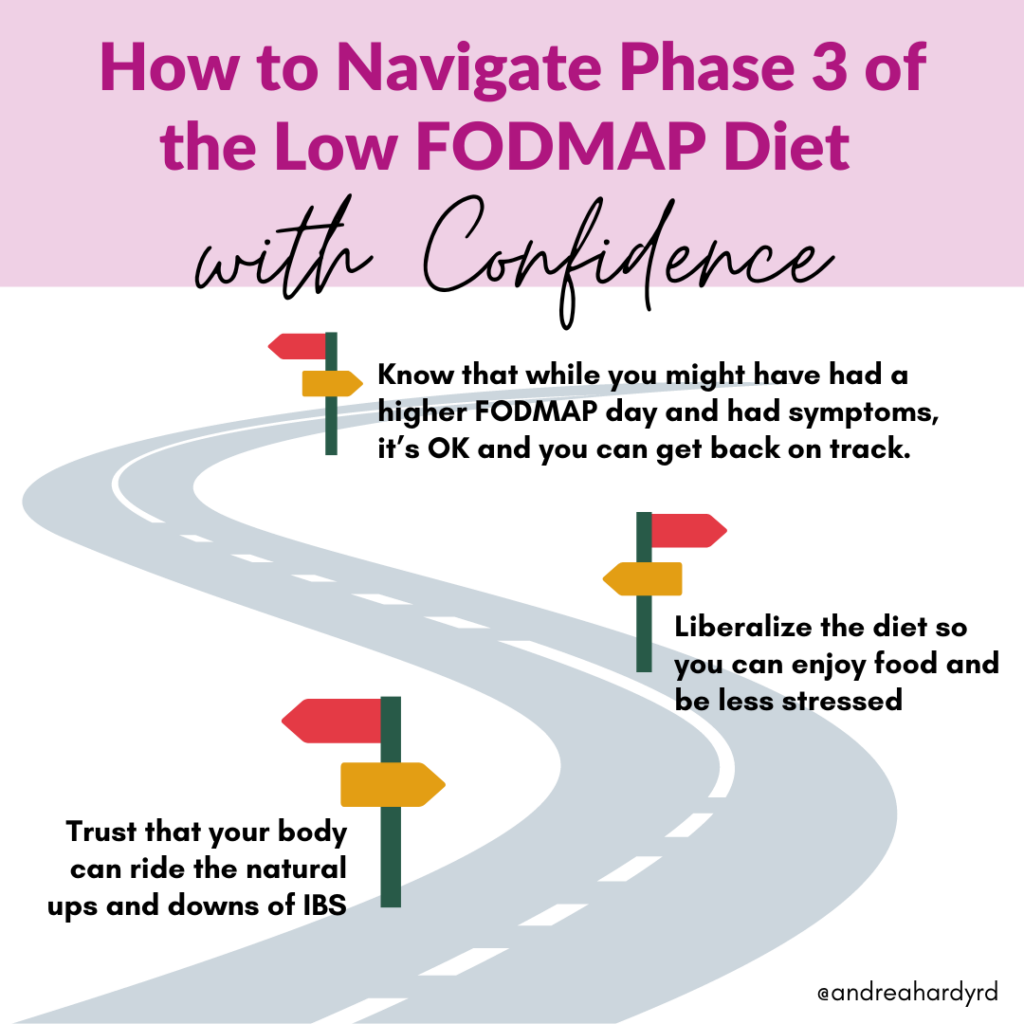As an IBS dietitian I am always looking for ways to help my patients navigate the low FODMAP diet. On Instagram @AndreaHardyRD, I talk all about reintroducing FODMAPs. This can be a tricky area for some patients and I’ve collected some of my top tips to help guide you through this process!
Ready to reintroduce FODMAPS? 😮
You’ve been on the low FODMAP diet for 2-6 weeks (at least) and your symptoms have improved. 🤗You’re ready to test and see how you tolerate FODMAP’s, but how do you do it?
Here are some pro reintroduction tips:
- Reintroduction is done by category of FODMAP, not individual foods (I bet you’re breathing a sigh of relief that you don’t need to “test” every single food you’ve eliminated!). You’ll want to reintroduce with a food that only contains ONE type of FODMAP.
- You’ll want to start with a small amount of that food, and increase intake over a period of days (we do 3 days @ignite.nutrition.inc – we don’t want you in the reintroduction phase forever!)
- During reintroduction, you remain on the low FODMAP diet other than the food you’re reintroducing. If you did happen to have some higher FODMAP days (for example, you ate out or attended a celebration and had more FODMAPs than usual), wait 2-3 days before continuing reintroduction.
The categories of FODMAPs to reintroduce are:
- 🥛Lactose
- 🍎Fructose
- 🍑Mannitol
- 🥑Sorbitol
- 🍞Fructans
- 🥜Galacto-oligosaccharides
It’s also suggested to do a reintroduction of a combination fructose and sorbitol (e.g. apple, pear), as these FODMAPs are frequently found together in common foods.
Many times people get confused and overwhelmed with reintroduction. They find the Monash instructions confusing and inadequate. It’s why I’ve created a ‘Reintroduce FODMAP’s’ online course, to take you through phases 2 & 3!
It comes with video instructions, handouts, step by step, and tons of troubleshooting – exactly what I see my patients struggle with during reintroduction is what’s in this course! Be sure to check it out 🔍
How to Liberalize My Diet
Have you made it to phase 3 of the low FODMAP diet?
Depending on your confidence level, I often see people unsure of what to do during this phase of the low FODMAP diet, and often end up essentially eating low FODMAP instead of liberalizing to include their tolerated amounts of FODMAPs! 😨
So how do you add FODMAPs back in – with confidence?
Well – there’s no research on the best way, but @ignite.nutrition.inc, we’ve found that body trust is a HUGE element here of liberalizing the diet. ❤️ If you’re not confident you can liberalize, and are nervous about getting symptoms – you just might get symptoms. So taking it slow is OK!
You have options – you can start with foods you ‘passed with flying colors’ freely, or take a slower approach and build up to your usual intake.
Either way, the goal is to:
- Trust that your body can ride the natural ups and downs of IBS
- Liberalize the diet so you can enjoy food and be less stressed
- Know that while you might have had a higher FODMAP day and had symptoms, it’s OK and you can get back on track.
It’s important to remember that IBS is a journey. It’s completely normal to go through periods when your symptoms are well-controlled and periods when your symptoms flare up. Some people choose to go back to a low FODMAP diet temporarily to get symptoms under control, and that’s ok!
Many times people get confused and overwhelmed with the liberalization phase. They find the Monash instructions confusing and inadequate. It’s why I’ve created a ‘Reintroduce FODMAP’s’ online course, to take you through phases 2 & 3!
It comes with video instructions, handouts, step by step, and tons of troubleshooting – exactly what I see my patients struggle with during reintroduction and liberalization is what’s in this course! Be sure to check it out 🔍





Recent Comments